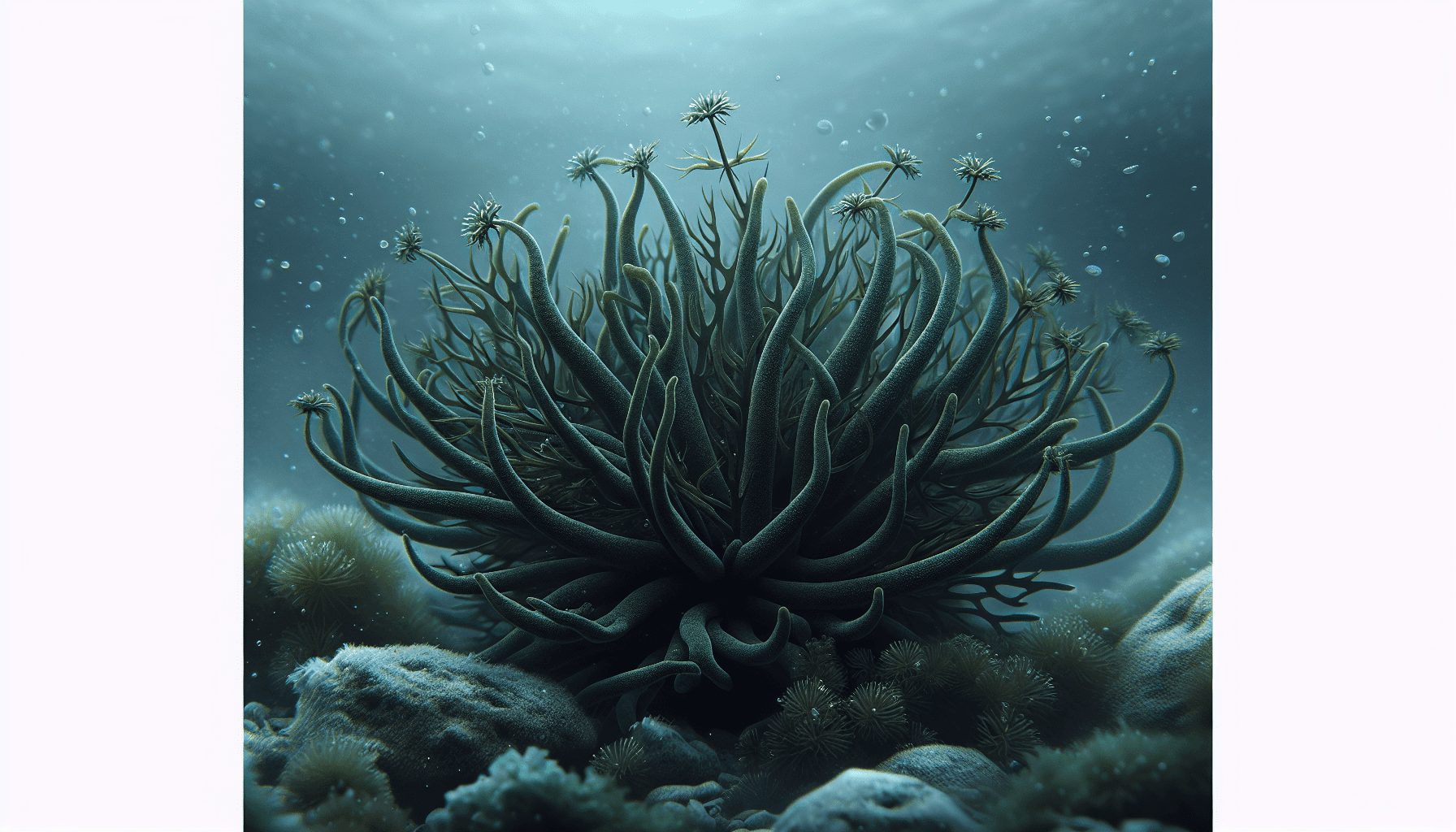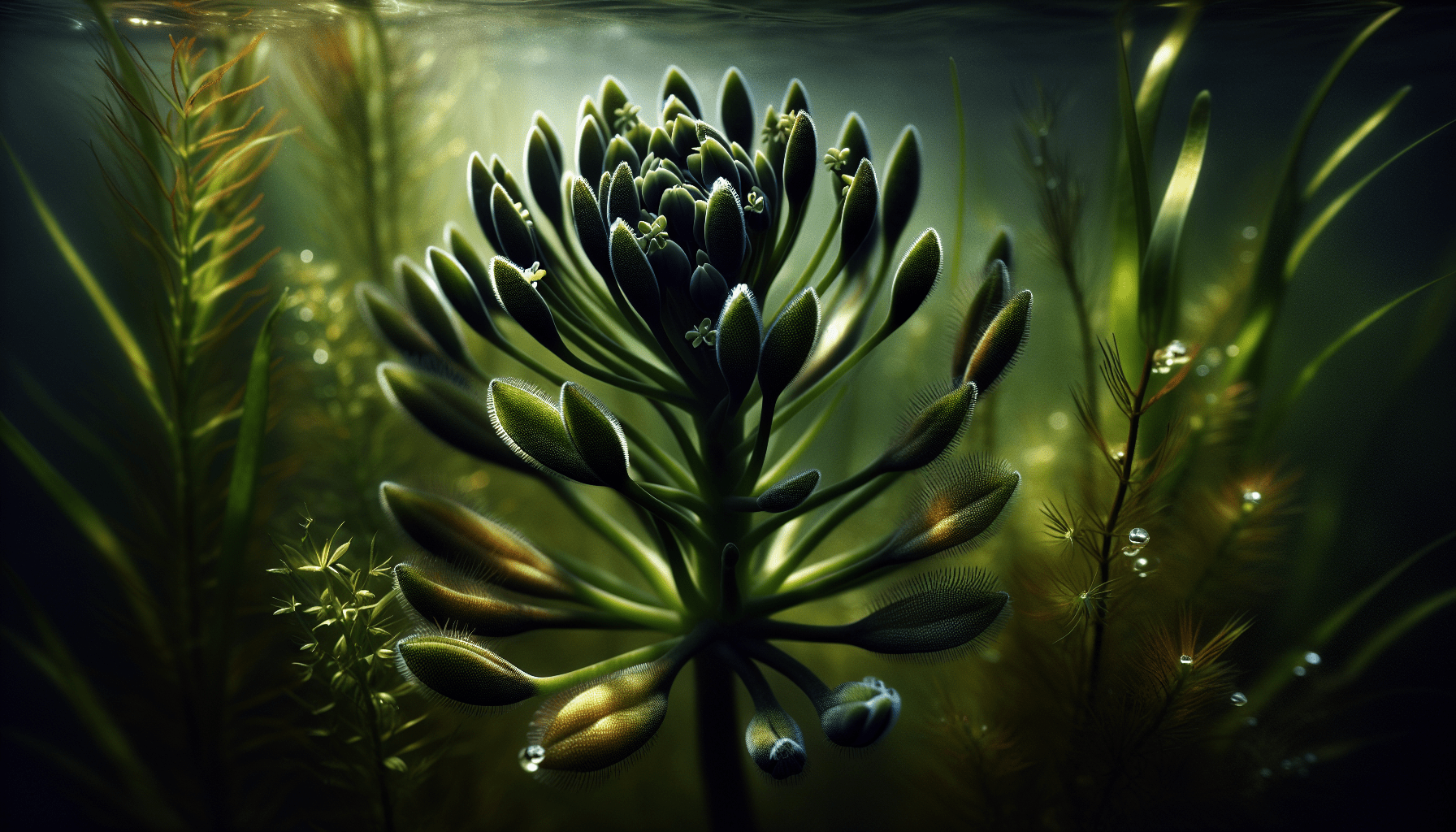In your exploration of aquatic plant life, you may have encountered the term ‘Ceratophyllum’ and wondered what it signifies. This is a scientific term for a specific type of aquatic weed, known colloquially as ‘hornwort.’ By analyzing its unique properties, ecological significance and practical applications, you will gain a more comprehensive understanding of this intriguing species. This article offers an in-depth discussion on Ceratophyllum, providing you crucial insights into its biology, habitat, and role within the broader ecosystem.
What is the Aquatic Weed Ceratophyllum
Definition and Brief Overview
Ceratophyllum, also commonly referred to as the aquatic weed, is a species of flowering plants that are exclusively aquatic. It belongs to the monogeneric family Ceratophyllaceae and has widely distributed members around the world. As an indicator of its aquatic nature, this plant tends to grow submerged, often free-floating, in still or slow-moving freshwaters.
Origin and Distribution
The genus Ceratophyllum has an almost worldwide distribution, spanning across continents from North and Central America, Europe, Asia to Africa and Australia. The origin of this plant species is traced back to ancient times, with fossil records suggesting that members of the Ceratophyllaceae were abundant as far back as the Late Cretaceous.
Common Names of Ceratophyllum
Ceratophyllum comes with many common names based on its appearance, habitat, and location. The more frequently used names include ‘Hornwort’, ‘Coontail’ and ‘Rigid hornwort’. The names often refer to the stiff, needle-like leaves that resemble the horns of animals.
Characteristics of Ceratophyllum
Physical Appearance and Structure
The Ceratophyllum plant is characterized by its dark-green, forked leaves that are stiff and needle-like. It lacks true roots but has modified stems (rhizoids) that serve a similar function. The stems can grow up to 3 meters in length, with a bushy appearance due to the densely clustered leaves.
Types and Varieties
There are several species of Ceratophyllum recognized scientifically, with the most common being Ceratophyllum demersum, Ceratophyllum echinatum, and Ceratophyllum muricatum. These varieties differ slightly in terms of their leaf structure, growth habits, and occurrence in specific habitats.
Habitats and Growth Conditions
Ceratophyllum is highly adaptable and can thrive in a wide range of water bodies, from lakes, ponds, streams, to ditches and canals. They prefer still or slow-moving freshwaters with high levels of nutrients. They can also tolerate a wide range of temperatures and light conditions.
Rate of Spread and Reproduction
Ceratophyllum displays a rapid growth rate and has a highly efficient reproduction system. This aquatic weed reproduces chiefly through vegetative fragmentation, where stem fragments carrying nodes break off from the parent plant and develop into new plants. It also reproduces sexually, producing seeds that can remain viable in the sediment for many years.

Ecological Impact of Ceratophyllum
Impact on Water Quality
Ceratophyllum is known to impact water quality negatively by absorbing large amounts of nutrients from the water, leading to eutrophication. It also may inhibit the growth of harmful algal blooms by competing for nutrients.
Influence on Aquatic Ecosystems
Ceratophyllum provides a habitat for many aquatic organisms, including insects, fish, and invertebrates. However, dense growth can lead to the displacement of native aquatic vegetation, altering the ecosystem’s balance.
Interaction with Other Aquatic Organisms
Apart from providing habitat, Ceratophyllum also forms part of the food chain in some aquatic ecosystems. However, when present in excessive quantities, they can interfere with the feeding habits of certain fish species, hindering their ability to catch prey.
Economic Impact of Ceratophyllum
Effect on Fisheries and Aquaculture
Overgrowth of Ceratophyllum can lead to a decrease in fish populations due to the obstruction of their feeding habits, impacting the productivity of commercial and recreational fisheries.
Impact on Water-Based Recreational Activities
Excessive growth of Ceratophyllum can impede water-based recreational activities like swimming, boating, and fishing. It can get tangled in boat propellers, clog water intake pipes, and creates unsightly surface mats.
Losses in Real Estate Values Around Infected Water Bodies
The presence of Ceratophyllum can significantly reduce the aesthetic appeal of water bodies, leading to decreased property values in the surrounding areas.

Utilization of De Ceratophyllum
Use in Aquatic Gardening and Ornamental Ponds
In controlled conditions, Ceratophyllum can be used as an attractive addition to ornamental ponds and aquaria due to its bushy appearance and its ability to oxygenate water and provide habitat for aquatic life.
Bioremediation and Phytoremediation
Ceratophyllum has the potential for use in bioremediation and phytoremediation due to its high absorption capacity for heavy metals and other pollutants found in water bodies.
Potential for Biomass Energy Production
Research is underway exploring the potential use of Ceratophyllum as a source of biomass energy, given its rapid growth rate and abundance.
Steps in Aquatic Weed Management
Identification and Assessment
Successful management of Ceratophyllum begins with accurate identification and assessment of the extent of infestation, biodiversity within the site, and understanding the specific environmental factors favouring its growth.
Prevention Strategies
Prevention strategies include practices like regular monitoring, proper disposal of aquarium plants, and limiting the introduction of nutrients in water bodies to prevent the establishment and rapid growth of Ceratophyllum.
Physical and Mechanical Control Measures
Physical and mechanical control measures include manual removal, bottom sealing to restrict growth, and mechanical harvesting using specialized equipment.
Chemical Control of Ceratophyllum
Available Chemical Solutions
There are several chemical solutions such as herbicides and algaecides available for controlling Ceratophyllum. These should be used with caution due to their potential adverse effects on non-target organisms and the environment.
Effectiveness and Risks
While chemical control can be effective in controlling Ceratophyllum, there are risks associated, including potential harm to aquatic life, water quality changes, and the development of herbicide-resistant strains.
Recommended Application Methods
The type, dosage, and application method of chemical solutions should be carefully selected based on specific conditions and in accordance with guidelines so as not to cause harm to non-target organisms or humans.
Biological Control of Ceratophyllum
Use of Insect Species
Certain insect species feed on Ceratophyllum and can be used for biological control. However, their impact on the weed population is usually not enough to provide effective control on a large scale.
Application of Pathogenic Microorganisms
Certain pathogenic microorganisms, such as bacteria and fungi, can infect and reduce the growth of Ceratophyllum, emerging as potential biological control agents.
Role of Herbivorous Fish
Herbivorous fish such as grass carp have been used to control the growth of Ceratophyllum. However, these should be utilized with caution due to their potential impact on native species and habitats.
Case Studies on Ceratophyllum Control
Successful Management Examples
Various successful control strategies have been implemented globally, ranging from mechanical removal, chemical treatment, to the use of herbivorous fish, each uniquely adapted to local conditions.
Lessons Learned from Failed Attempts
Failed attempts at control highlight the importance of utilizing a multi-pronged control strategy, continuous monitoring, and public awareness in achieving long-term success in Ceratophyllum management.
Ongoing Research and Innovation
Ongoing research and innovative measures, such as utilizing drone technology for assessment and mechanical removal, and exploration of new biological control agents, hold promise for future Ceratophyllum control efforts.
The Future of Ceratophyllum Control
Emerging Technologies and Techniques
Emerging technologies such as remote sensing and machine learning offer potential for early detection and monitoring of Ceratophyllum, while new biological control agents offer hope for more effective and environmentally friendly control methods.
Implications of Climate Change
With climate change, predictions show an increase in eutrophication and warmer water temperatures which may favor the spread of Ceratophyllum. This emphasizes the need for proactive measures and flexible management strategies.
Role of Public Awareness and Participation
The role of the public in preventing the spread of Ceratophyllum, through responsible actions such as not disposing of aquarium plants in native waters and supporting control efforts, cannot be overstated. Public participation in monitoring and reporting can significantly aid in early detection efforts.